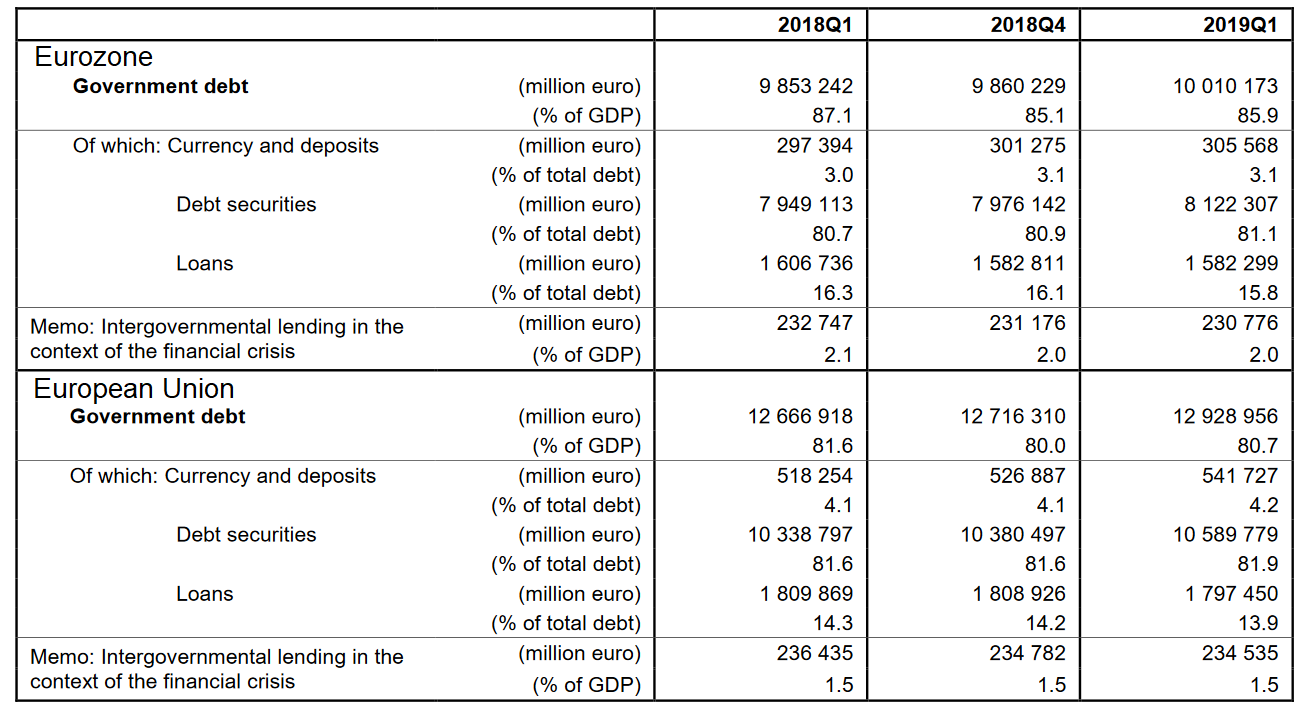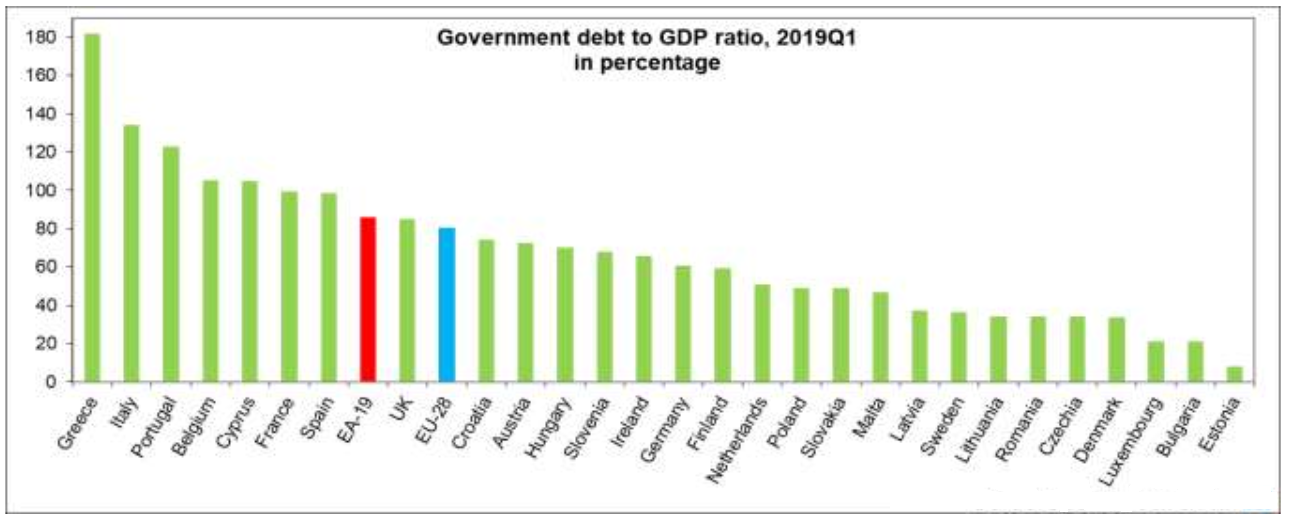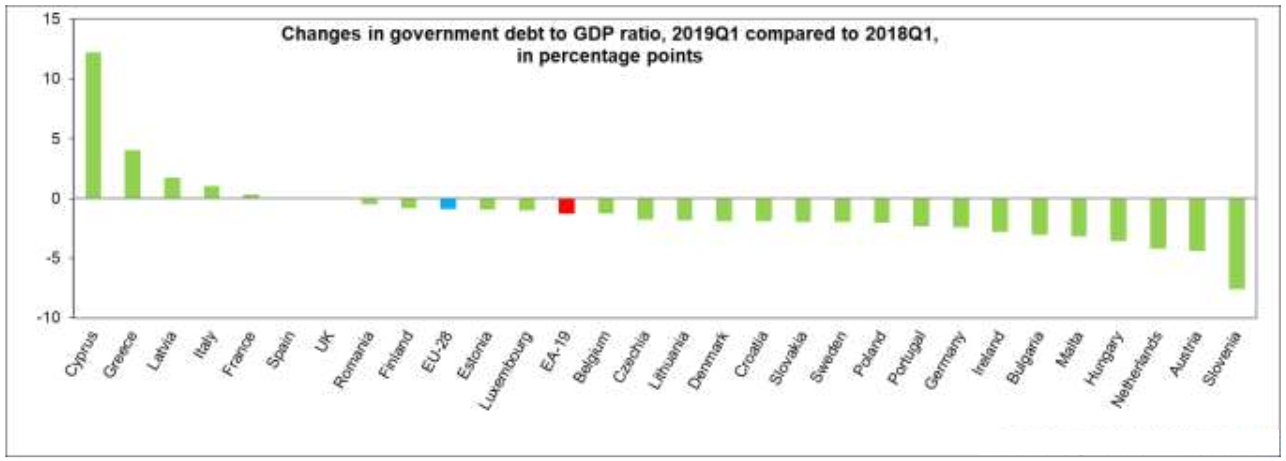Government debt to GDP for the Eurozone stood at 85.9% at the end of Q1 2019 (as against 87.1% at the end of Q1 2018). For the European Union, the number was 80.7% (as against 81.6% at the end of Q1 2018).

Government debt to GDP by country
The highest ratios of government debt to GDP were recorded in Greece (181.9%), Italy (134.0%), Portugal (123.0%), Belgium (105.1%) and Cyprus (105%) and the lowest in Estonia (8.1%), Bulgaria (21.2%) and Luxembourg (21.3%).

Year on year changes
Compared to the end of Q1 2018, the highest changes in government debt to GDP ratios were recorded in Cyprus (+12.2%), Greece (+4.1%), Latvia (+1.7%), Italy (+1%) and France (+0.3%), while Slovenia(-7.6%), Austria (-4.4% ) and the Netherlands (-4.2%) recorded the largest decreases.

The Eurozone or Euro area (EA-19) currently includes Belgium, Germany, Estonia, Ireland, Greece, Spain, France, Italy, Cyprus, Latvia, Lithuania, Luxembourg, Malta, the Netherlands, Austria, Portugal, Slovenia, Slovakia and Finland.
The European Union (EU-28) currently includes Belgium, Bulgaria, Czechia (formerly the Czech Republic), Denmark, Germany, Estonia, Ireland, Greece, Spain, France, Croatia, Italy, Cyprus, Latvia, Lithuania, Luxembourg, Hungary, Malta, the Netherlands, Austria, Poland, Portugal, Romania, Slovenia, Slovakia, Finland, Sweden and the United Kingdom.